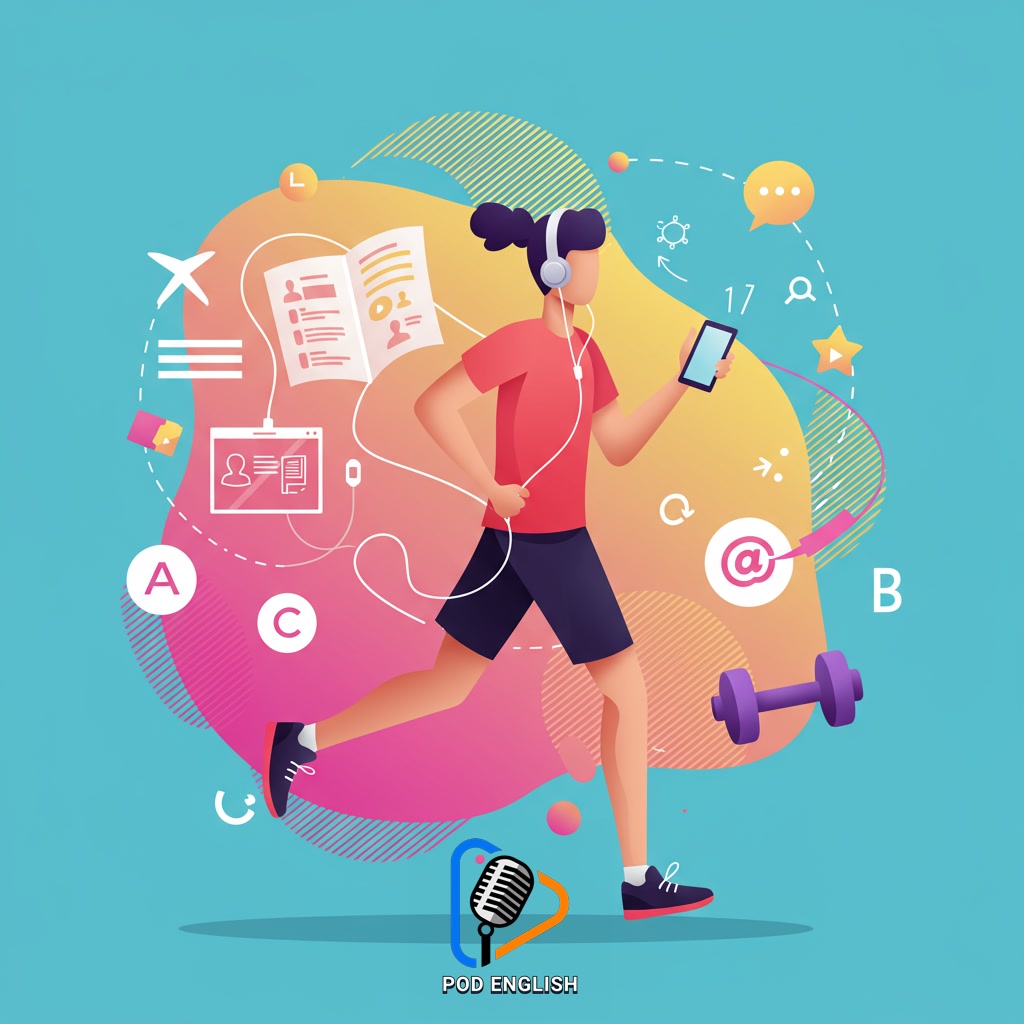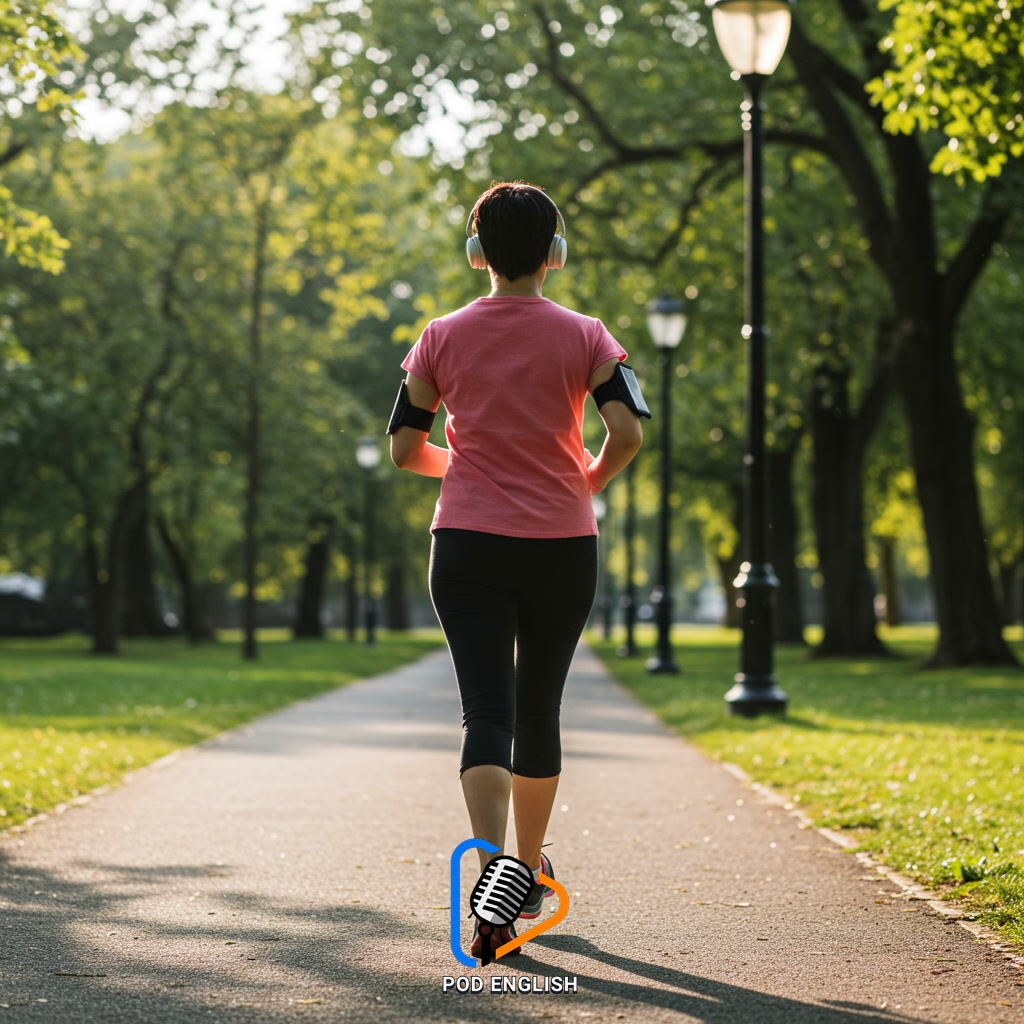Learn English
Learn English Faster: Combine Study and Fitness
This content explores an effective strategy for improving English language skills more quickly by integrating language practice with physical activity. It suggests combining learning activities, such as listening or vocabulary review, with fitness routines. This approach aims to enhance cognitive functions like focus and memory through exercise, thereby accelerating the acquisition of English proficiency. It offers a dynamic and active alternative to conventional language study methods.
Table of Contents
- Section 1: Introduction: The Unexpected Power of Combining English Study and Fitness
- Section 2: The Science Behind It: How Physical Activity Boosts Learning and Memory
- Section 3: Practical Strategies: Integrating English Learning into Your Fitness Routine
- Section 4: Fitness Activities Perfect for English Practice
- Section 5: Creating Your Personalized Study-Fitness Plan
- Section 6: Tracking Progress and Staying Motivated
- Section 7: Conclusion: Accelerating Your English Fluency Through an Active Lifestyle
Section 1: Introduction: The Unexpected Power of Combining English Study and Fitness
Learning English can sometimes feel like a challenging journey, requiring significant focus and dedication. While traditional methods are valuable, have you ever considered that your physical well-being might hold a surprising key to unlocking faster progress? This document explores an innovative approach that goes beyond sitting at a desk. We delve into the unexpected power of integrating English language study with physical fitness. Far from being separate activities, combining brainwork with body movement can actually enhance cognitive functions crucial for language acquisition, such as improving focus, boosting memory retention, and increasing overall energy levels for learning. By understanding this powerful synergy, you can transform your study routine into a more dynamic and effective experience, potentially accelerating your path to fluency.

Introduction: The Unexpected Power of Combining English Study and Fitness
Section 2: The Science Behind It: How Physical Activity Boosts Learning and Memory
Scientific research provides strong evidence that physical activity significantly benefits brain function, including learning and memory. When you exercise, blood flow to the brain increases, delivering more oxygen and nutrients essential for cognitive processes. Exercise also stimulates the release of crucial chemicals like Brain-Derived Neurotrophic Factor (BDNF), often called ‘Miracle-Gro’ for the brain, which supports the growth, survival, and function of brain cells and strengthens neural connections. These physiological changes lead to improved focus, enhanced attention span, better information processing, and more efficient memory consolidation – all vital components for mastering a new language like English. Essentially, moving your body helps build a healthier, more capable brain, making it a powerful ally in your language learning journey.

The Science Behind It: How Physical Activity Boosts Learning and Memory
Section 3: Practical Strategies: Integrating English Learning into Your Fitness Routine
Building upon the understanding that exercise enhances cognitive function, integrating English learning into your fitness routine becomes a powerful strategy. This isn’t about intense multitasking, but rather leveraging periods of physical activity for passive or low-intensity language exposure. For instance, listening to English podcasts, audiobooks, or language learning apps while jogging, cycling, or walking can significantly boost your listening comprehension and vocabulary acquisition without requiring dedicated sit-down study time. You could also review digital flashcards during rest periods between sets at the gym or practice speaking simple phrases aloud during a solo walk. The key is to find enjoyable ways to weave language practice into activities you already do, making the learning process more dynamic and less of a separate chore.

Practical Strategies: Integrating English Learning into Your Fitness Routine
Section 4: Fitness Activities Perfect for English Practice
Building upon the understanding that exercise enhances cognitive function, integrating English learning into your fitness routine becomes a powerful strategy. This isn’t about intense multitasking, but rather selecting activities where you can comfortably engage your mind with language. Ideal choices include leisurely walks, steady jogs, cycling on familiar paths, or even using a stationary bike or treadmill. During these activities, you can listen to English podcasts, audiobooks, or language learning apps. Alternatively, you might mentally review vocabulary flashcards, practice sentence structures, or narrate your surroundings in English. The rhythmic nature of exercise can help improve focus and retention, making your English study feel less like a chore and more like a dynamic part of your active lifestyle.

Fitness Activities Perfect for English Practice
Section 5: Creating Your Personalized Study-Fitness Plan
To effectively combine English study with fitness, begin by assessing your current routines. Identify times and activities where integration is feasible – perhaps listening to English podcasts during a walk or run, reviewing vocabulary flashcards during workout breaks, or watching English-language fitness videos. Don’t try to overhaul everything at once; start small with one or two activities and gradually build up. Personalization is key: choose exercises and study methods you genuinely enjoy to ensure long-term adherence. Consider your learning style and fitness level to create a plan that is both challenging and sustainable, making this combined approach a natural and enjoyable part of your lifestyle.

Creating Your Personalized Study-Fitness Plan
Section 6: Tracking Progress and Staying Motivated
Once you’ve integrated English into your fitness routine, tracking your progress becomes crucial for sustained motivation. Utilize apps that monitor both your physical activity, like steps or workout duration, and your language learning milestones, such as new vocabulary acquired or listening time completed. Consider keeping a simple journal to note your combined sessions, reflecting on how you felt and what you achieved. Setting small, measurable goals for both your language skills and fitness levels provides clear targets. To maintain motivation, celebrate your achievements, no matter how small – finishing a challenging podcast while jogging or mastering a new grammar point during a cool-down. Finding an accountability partner or varying your activities can also help keep the process engaging and ensure you stay on track towards faster English proficiency and improved fitness.
Tracking Progress and Staying Motivated
Section 7: Conclusion: Accelerating Your English Fluency Through an Active Lifestyle
In conclusion, the integration of English language study with physical fitness offers a powerful and dynamic pathway to accelerated fluency. By weaving listening practice into your runs, vocabulary review into your gym sessions, or pronunciation drills into your walks, you leverage the cognitive benefits of exercise – improved focus, enhanced memory, and reduced stress – to boost your learning efficiency. This approach transforms passive study into an active, engaging lifestyle change. As you continue to track your progress in both domains, you’ll find sustained motivation and tangible results, proving that moving your body can indeed help move you closer to your English goals. Embrace this active learning strategy, and unlock a faster, more effective journey towards mastering English.

Conclusion: Accelerating Your English Fluency Through an Active Lifestyle













